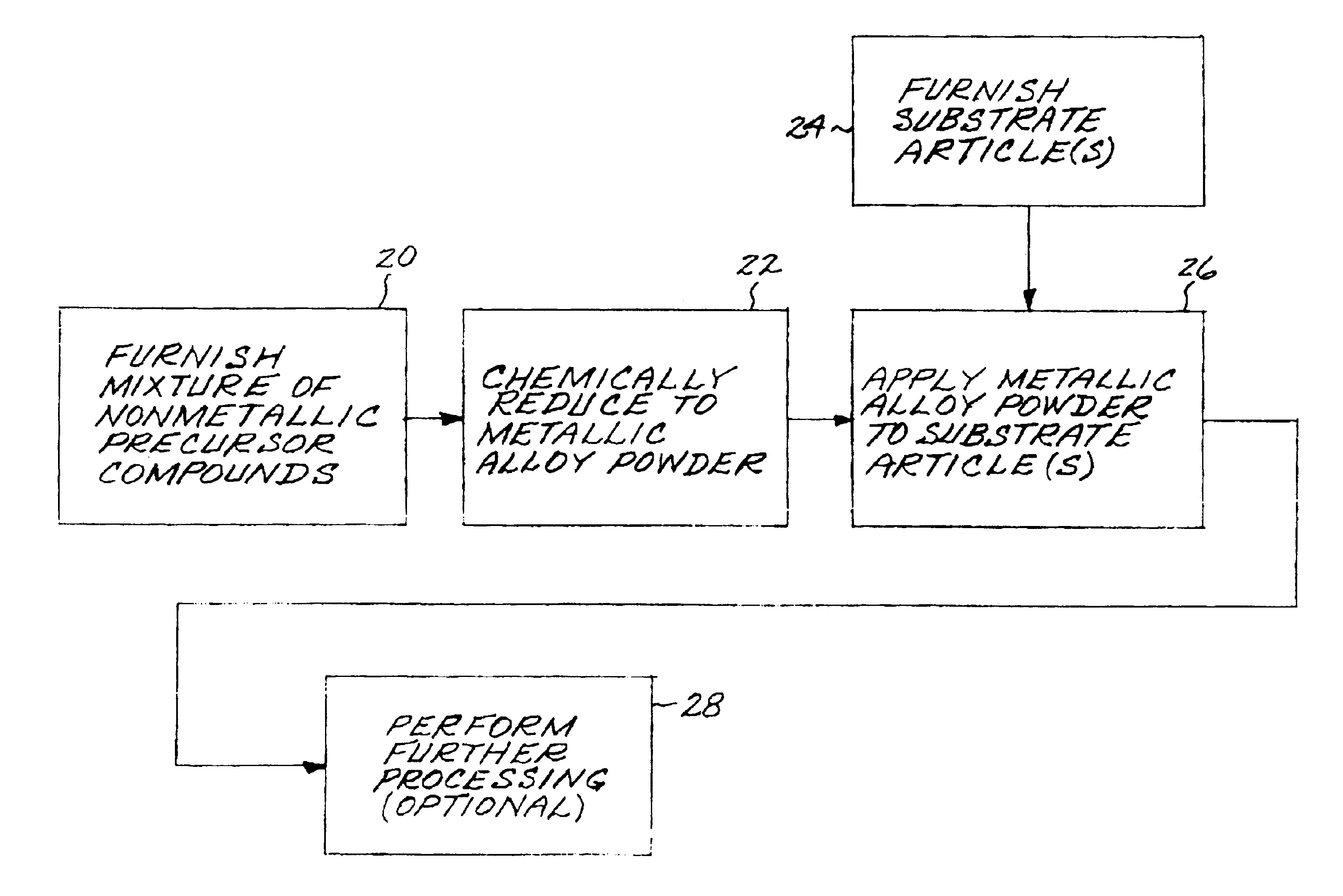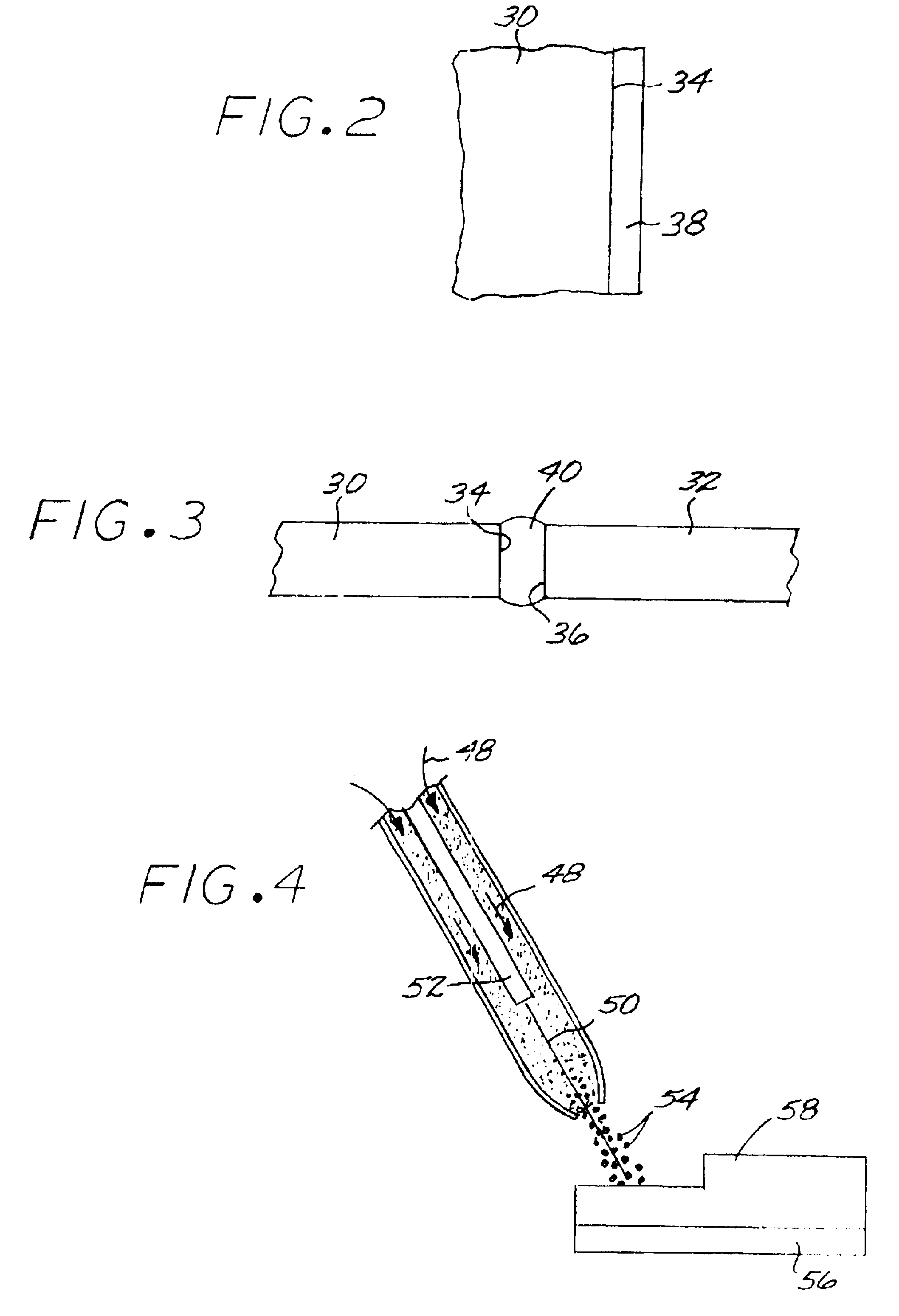Fabrication and utilization of metallic powder prepared without melting
a technology of metallic powder and fabrication process, which is applied in the direction of solid-state diffusion coating, heat inorganic powder coating, non-electric welding apparatus, etc., can solve the problems of impurities in the melt, the inability to prepare metallic alloy compositions by melting techniques in commercial-scale production, and the fundamental limitations of the fabrication process, etc., to achieve a narrow size distribution and better utilization
- Summary
- Abstract
- Description
- Claims
- Application Information
AI Technical Summary
Benefits of technology
Problems solved by technology
Method used
Image
Examples
Embodiment Construction
[0020]FIG. 1 depicts a method for fabricating and utilizing a metallic alloy made of metallic constituent elements. The method includes first furnishing a mixture of nonmetallic precursor compounds of the metallic constituent elements, step 20. “Nonmetallic precursor compounds” are nonmetallic compounds of the metals that eventually constitute the metallic alloy. Any operable nonmetallic precursor compounds may be used. Reducible oxides of the metals are the preferred nonmetallic precursor compounds for solid-phase reduction, and reducible halides of the metals are the preferred nonmetallic precursor compounds for vapor-phase reduction.
[0021]As used herein, the term “metallic alloy” includes both conventional metallic alloys and intermetallic compounds formed of metallic constituents, such as approximately equiatomic TiAl. Relatively small amounts of nonmetallic elements, such as boron, carbon, and silicon, may also be present. The nonmetallic precursor compounds collectively contai...
PUM
| Property | Measurement | Unit |
|---|---|---|
| Structure | aaaaa | aaaaa |
| Metallic bond | aaaaa | aaaaa |
Abstract
Description
Claims
Application Information
 Login to View More
Login to View More - R&D
- Intellectual Property
- Life Sciences
- Materials
- Tech Scout
- Unparalleled Data Quality
- Higher Quality Content
- 60% Fewer Hallucinations
Browse by: Latest US Patents, China's latest patents, Technical Efficacy Thesaurus, Application Domain, Technology Topic, Popular Technical Reports.
© 2025 PatSnap. All rights reserved.Legal|Privacy policy|Modern Slavery Act Transparency Statement|Sitemap|About US| Contact US: help@patsnap.com



